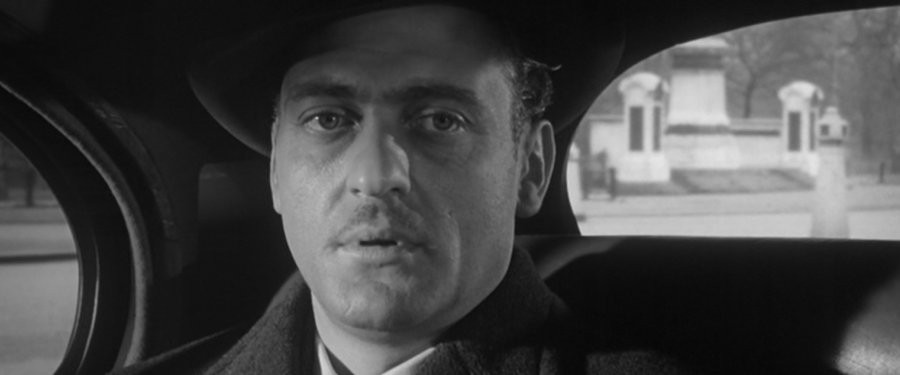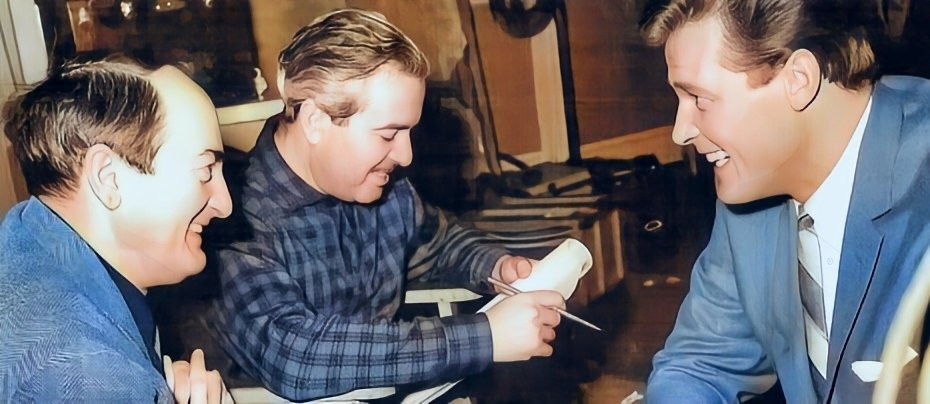
Ingrid Pitt
Known for her remarkable presence in horror films, particularly during the 1970s, Ingrid Pitt was a celebrated actress whose career spanned over several decades, and she earned a place in film history with her portrayal of strong, often mysterious women in gothic and supernatural settings. Pitt’s unique blend of elegance and boldness in her roles made her an icon of the genre, and she remains an enduring figure in cinematic history.
Although Pitt is most closely associated with horror, her career extended beyond the genre. She appeared in several other notable television and film roles having made her television debut (uncredited) in a 1963 episode of The Saint, she starred in the psychological thriller The Man Who Haunted Himself (1970) also alongside Roger Moore, and in the Doctor Who franchise, she made two appearances: first in the 1972 serial The Time Monster, and later in the 1984 story Warriors of the Deep.
Pitt’s career also included work as a writer, and she authored several books, including an autobiography titled Ingrid Pitt: Beyond the Forest (2007), in which she reflected on her experiences growing up during World War II, her rise to fame in the film industry, and her love for horror and fantasy cinema.
Ingoushka Petrov was born on 21 November 1937 in Warsaw, Poland, the second of two daughters to a German father with Russian roots and a Polish Jewish mother. Her early life was marked by hardship and courage, as she and her mother were imprisoned in the notorious Stutthof concentration camp during World War II. Despite the horrors of their imprisonment, Ingoushka and her mother managed a daring escape, a testament to their bravery and resilience in the face of unimaginable adversity.
Pitt detailed those harrowing experiences as well as her search through Europe in Red Cross refugee camps for her father, and her escape from East Berlin, one step ahead of the Volkspolizei.

In the 1950s, she relocated to Berlin, where she met and married American soldier, Laud Roland Pitt Jr. The marriage brought her to California, where she sought a new beginning. However, after the marriage ended, she returned to Europe and began to carve out a career in the film industry. She took small roles in movies and, in the spirit of reinvention, adopted the stage name that would come to be recognized worldwide. Her journey from the trauma of war to the silver screen embodied not just survival, but a determined pursuit of a new life and identity in an ever-changing world.

By the mid-sixties, Pitt was travelling between Europe and America, picking up roles wherever she could. She appeared in a 1967 episode of the US series Ironside and the following year she was cast in the Clint Eastwood starring movie Where Eagles Dare.
But it would be her work with Hammer Film Productions that would elevate her to cult figure status.
Pitt’s breakout role came in 1970 when she was cast as the seductive and dangerous Carmilla in The Vampire Lovers, a film based on the novella by Joseph Sheridan Le Fanu. This marked the beginning of her long association with Hammer Horror, in a series of gothic, often eroticized horror films that became immensely popular in the 1970s. Pitt’s performance as Carmilla was groundbreaking; it blended sensuality with terror and cemented her status as one of the leading actresses of the genre.

Pitt’s portrayal of Carmilla made her a favourite among horror fans, but it was not the only iconic role she would take on. She starred in several other Hammer productions, including Countess Dracula (1971), where she played the legendary figure Elizabeth Báthory, and The Wicker Man (1973).
In these films, Pitt became known for her combination of physical beauty, dramatic range, and the ability to embody characters that were both alluring and dangerous. She quickly became a symbol of the ‘femme fatale’ archetype, often cast in roles where her characters would either manipulate or seduce their male counterparts, often with tragic consequences. Her contributions to the horror genre are celebrated to this day, and she remains one of the most influential actresses in the history of British horror.

In the mid-1970s, she appeared on the judging panel of the British ITV talent show New Faces and appeared in a number of ITC produced shows such as Jason King, The Adventurer and The Zoo Gang. During the 1980s, Pitt returned to mainstream films and television. In the 1981 BBC Playhouse production, Unity, her character Fraulein Baum, who is denounced as a Jew by Unity Mitford (Lesley-Anne Down), was close to her real-life experience. At the same time, her popularity with horror film buffs kept her in demand for guest appearances at horror conventions and film festivals.
As the 1980s progressed, Pitt turned her back on film and television and founded her own theatrical touring company, starring in successful stage productions of Alfred Hitchcock's 1954 classic, Dial M for Murder, Duty Free (or Don't Bother to Dress), and Woman of Straw. She also turned to publishing. Pitt's first book was the 1980 novel, Cuckoo Run, a spy story about mistaken identity. This was followed in 1984 by a novelisation of the Perón era in Argentina (The Perons), where she lived for a number of years.
In 1984, Pitt and her husband Tony Rudlin were commissioned to script a Doctor Who adventure. The story, entitled The Macro Men, was one of a number of ideas submitted by the couple. The plot concerned events surrounding the Philadelphia Experiment—the urban legend about a U.S. Navy experiment during World War II to try to make the USS Eldridge destroyer escort invisible to radar. It involved the Doctor (Colin Baker) and companion Peri (Nicola Bryant) arriving on board the ship in 1943 in the Philadelphia Naval Shipyard and becoming involved in a battle against microscopic humanoid creatures native to Earth, but previously unknown to humankind. The story progressed no further than the preparation of a draft first-episode script, but in 2010 it was released by the audio story specialists Big Finish Productions as The Macros in their Doctor Who: The Lost Stories audios.

Her original novel Dracula Who...? was released in October 2012 alongside the script for the unproduced film version. The story concerned the return of Countess Dracula.
Pitt claimed her credentials for writing about ghosts sprung from a time when she lived with a tribe of Indians in Colorado. Sitting with her baby daughter, Steffanie, by a log fire, she was sure that she could see the face of her father smiling at her in the flames. The Ingrid Pitt Bedside Companion for Ghosthunters (2003) was Pitt's tenth book. It was preceded by The Ingrid Pitt Bedside Companion for Vampire Lovers (1998) and The Ingrid Pitt Book of Murder, Torture & Depravity (2000). She also wrote regular columns for various magazines and periodicals, including Shivers, TV & Film Memorabilia and Motoring and Leisure. She also wrote a regular column, often about politics, on her official website, as well as a weekly column at UK website Den of Geek.
She returned to the screen in the 2000’s and her last movie was, predictably, in a horror; Sea of Dust (2008) set in the fairytale village of Heidelberg where an unspeakable evil has taken root.

In 2010, Pitt collapsed and was subsequently diagnosed with congestive heart failure. She passed away in a south London hospital on 23 November 2010, two days after her 73rd birthday, leaving behind a legacy that continues to inspire filmmakers, actors, and fans around the world. Ingrid Pitt was a remarkable and adventurous woman, who enjoyed a passion for World War II aircraft. After revealing this on a radio programme, she was invited by the museum at RAF Duxford to have a flight in a Lancaster bomber. She held a student's pilot licence and was a black belt in karate. So much more than just a horror icon; she was an indomitable spirit - unwavering and bouncing back from setbacks with strength and resolve, and a trailblazer who carved out a unique place for herself in cinematic history.
Published on November 25th, 2024. Written by Marc Saul for Television Heaven.










